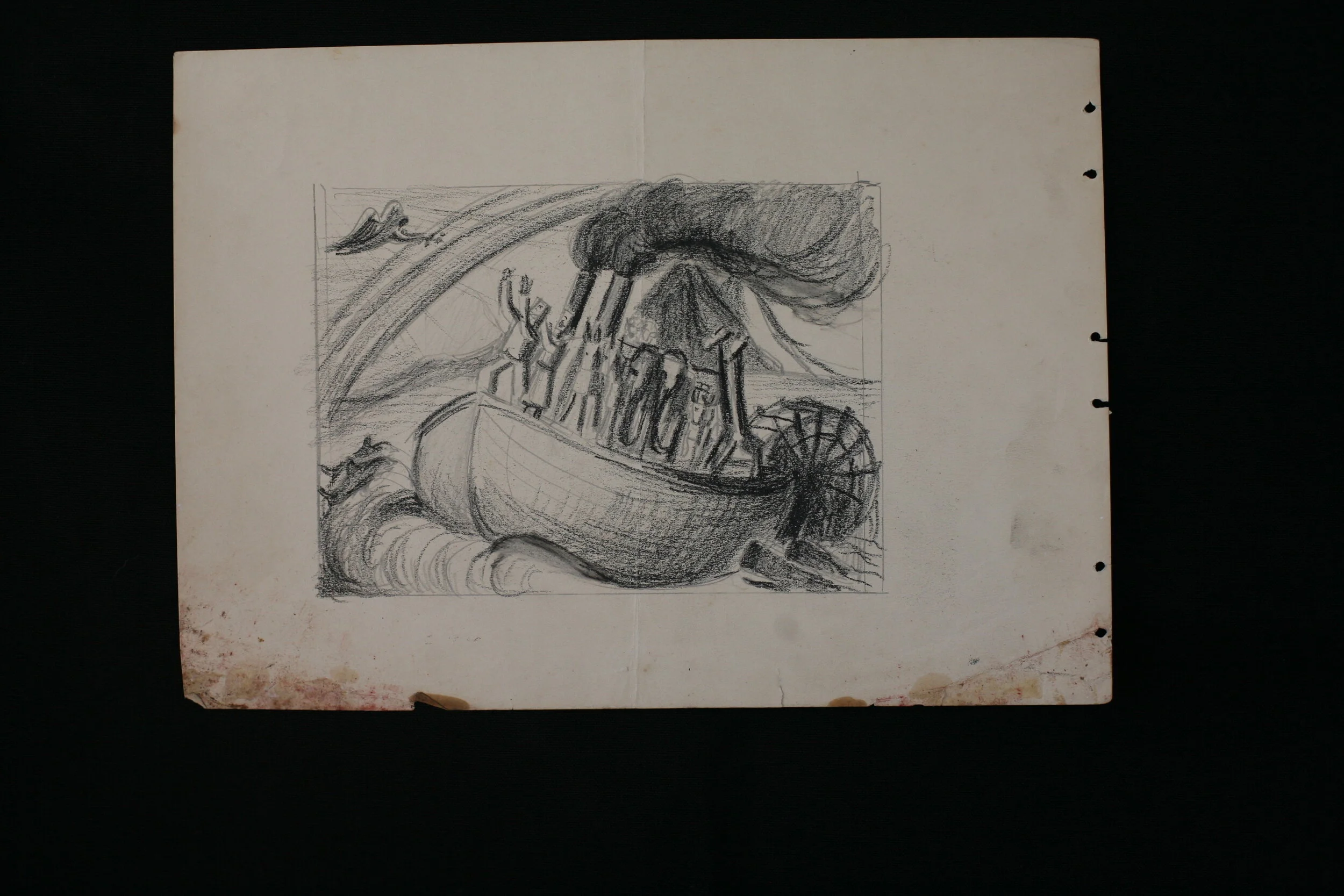Old Ark's A Moverin' and I'm Goin' Home
ca. 1939
Color lithograph
8 3/4” x 11” plate
The next few pages of this folio serve as a unique visual depiction of the process of making a color lithograph. Miraculously, charcoal, ink, and lithographic crayon studies have survived along with all color proofs for this print.
What is interesting is to contemplate the process of making a work of art that had built into it the healing process of helping people to remember the therapeutic value of their religious beliefs to help them recover from the living memory of slavery.
Old Ark's A Moverin' and I'm Goin' Home
ca. 1939
Charcoal study on artist’s paper
10” x 14” plate
The Copperville church community described their interpretation of a given spiritual in words, which the artist then illustrated. “Noah’s Ark,” a song referred to by the congregation as “The Old Ark’s A’Moverin’.” This is a clear example of translating a vernacular oral history of Maryland’s African American culture into a visual image evoking their deepest religious beliefs. Descended from enslaved people, the black population knew poverty and pain for centuries, and those of faith believed in the notion of an ark that would ferry them to safety in the afterlife. They trusted that their endless struggles in an otherwise unjust world would be compensated by final rewards in Heaven.
Both black-and-white and color versions of this lithograph were created around the same time. The color lithograph forms a part of the collection at the Metropolitan Museum of Art. Amazingly, many studies survive, in addition to color takes for the print. A large fresco was also made on this topic, in which the characters on the ark are portraits of Copperville residents. This piece was important to the community, and it was planned to feature it in a comprehensive illustrated book on Negro spirituals.
The artist left notes about the piece which contemplated what she had learned about the very real relationship of this spiritual’s imagery to overcoming the systemic racism that plagued the Eastern Shore:
To the colored people on the tidewater Noah’s Ark is not surprising or fantastic. Singing about the Ark, the Negroes are thinking of their church that provides them with a refuge for sailing steadily through life. They feel that the inevitable progress of the Ark toward the rainbow’s end typifies the long and dangerous voyage of the colored race toward freedom and good will. Instead of home being on this earth, home is that blessed Realm of Heaven—thwarted and scorned here—in Heaven all will be equal in the sight of God.

